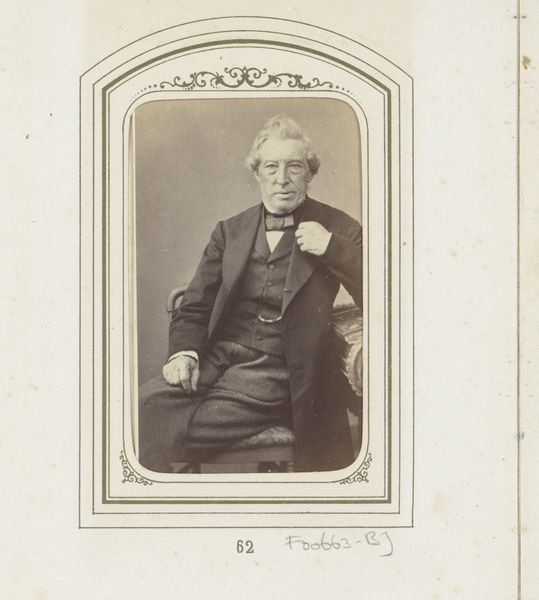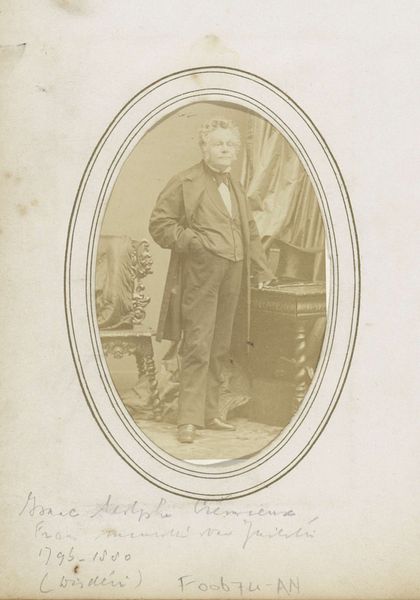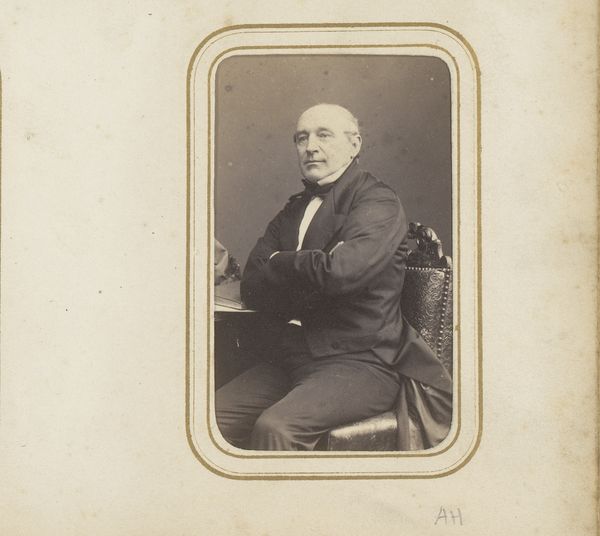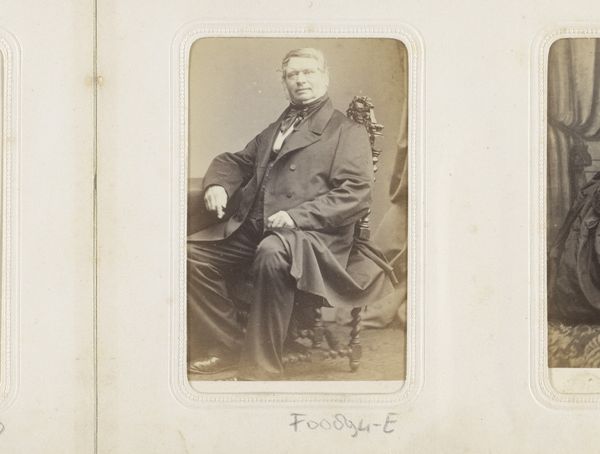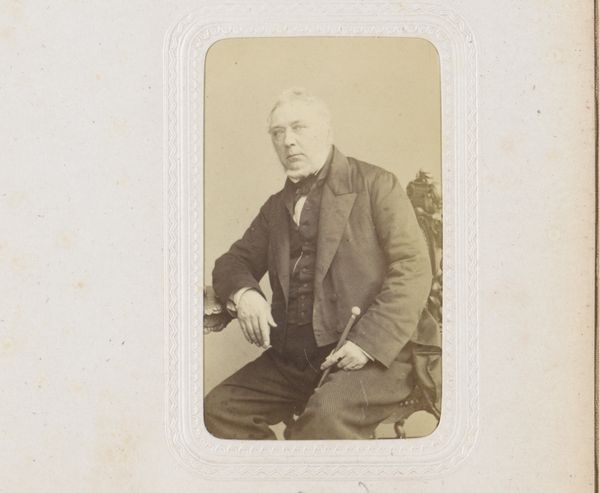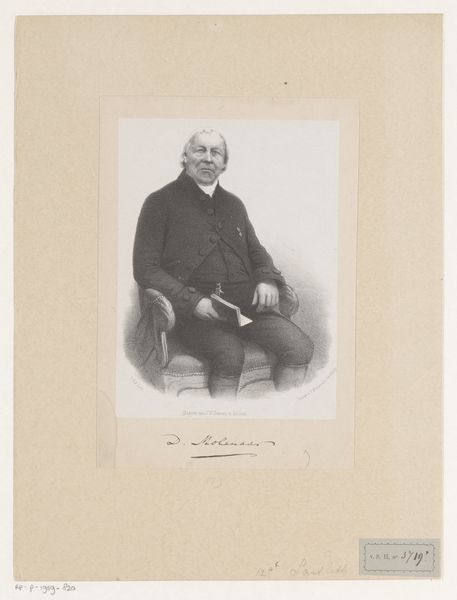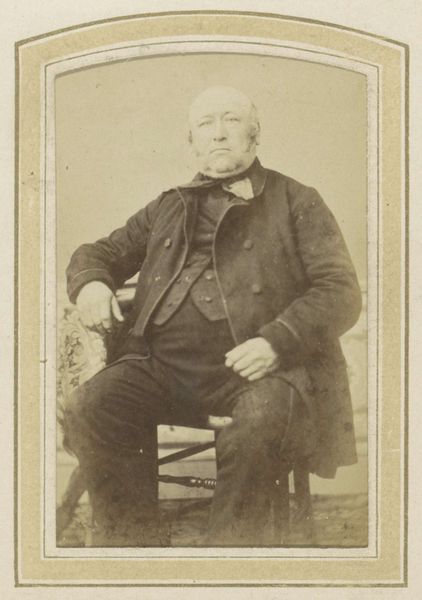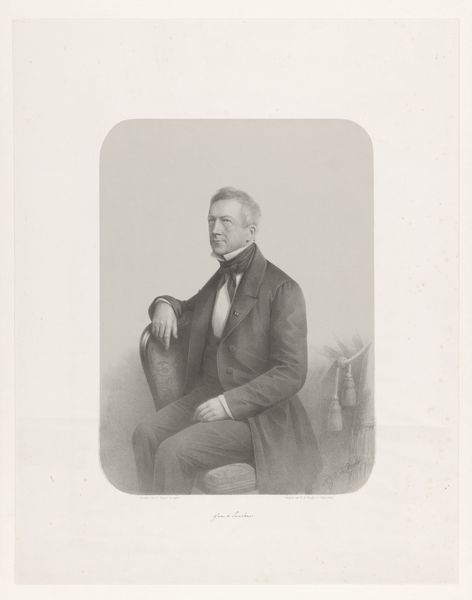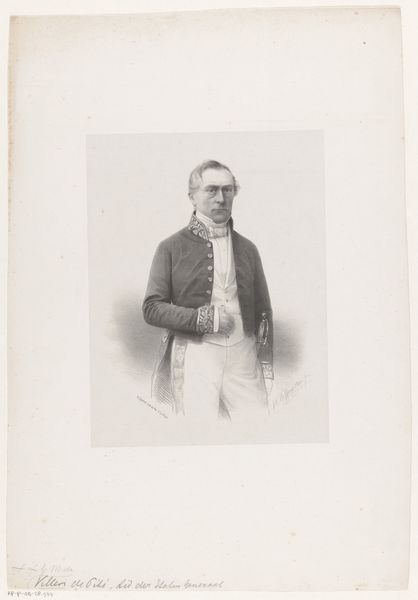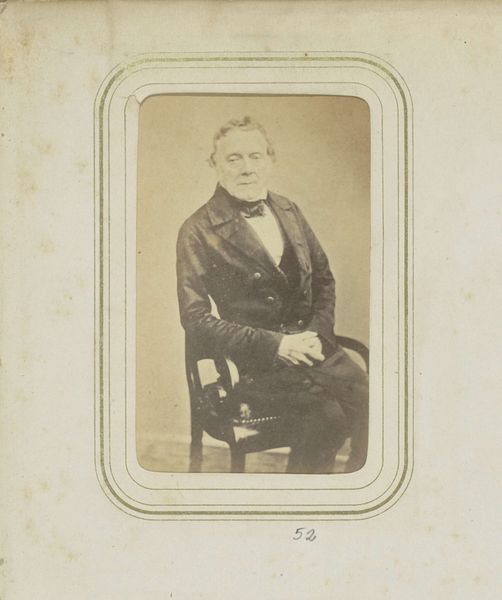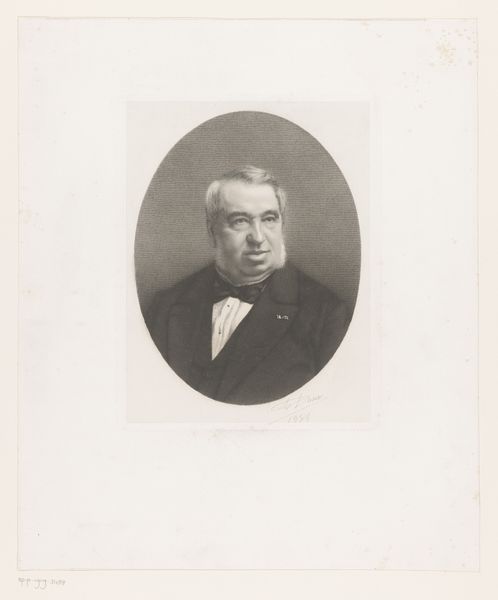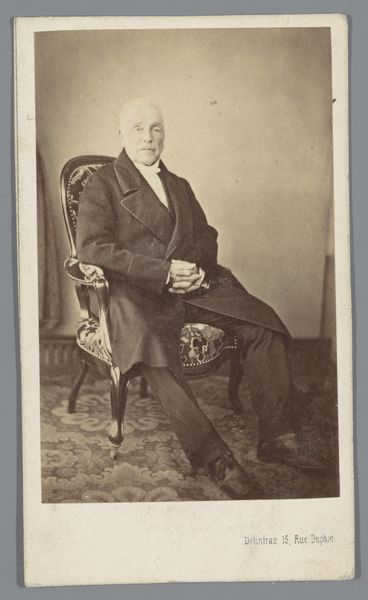
Portret van F.A.W. Miquel, hoogleraar in de faculteit Wis- en Natuurkunde aan de universiteit van Utrecht 1860 - 1871
0:00
0:00
daguerreotype, photography
#
portrait
#
16_19th-century
#
daguerreotype
#
archive photography
#
photography
#
historical photography
#
19th century
#
academic-art
Dimensions: height 102 mm, width 63 mm, height 529 mm, width 338 mm
Copyright: Rijks Museum: Open Domain
Curator: This daguerreotype, likely produced between 1860 and 1871, is identified as "Portret van F.A.W. Miquel, hoogleraar in de faculteit Wis- en Natuurkunde aan de universiteit van Utrecht," meaning a portrait of F.A.W. Miquel, a professor in the Faculty of Mathematics and Natural Sciences at the University of Utrecht. The photograph is attributed to A.A. Vermeulen & Co. Editor: The man certainly has an impressive air, doesn't he? Regal, even. He stares directly at the viewer, or perhaps more accurately, the camera. It feels rather formal and severe. Curator: Consider the symbols at play. In the mid-19th century, this formal photographic portrait would have signified status, intellectual prowess, and membership within an elite social strata. Daguerreotypes were novel technologies and signaled one’s modernity and ability to afford it. Editor: Absolutely. The meticulous details in the photograph are stunning. We can almost trace the weave of his suit. What about the elaborate chair he's sitting in? It is more like a throne! The very pose itself is meticulously crafted for public consumption and the dissemination of the importance of academia. Curator: Yes, the chair's elaborate details serve to underscore his position, anchoring him both literally and symbolically within a realm of established authority. Also note, Miquel was a professor, suggesting his association with the Enlightenment ideals of knowledge and reason. Editor: Do you think photography impacted how society began to value accurate depictions of people or historical memory in general? Did society develop trust in the images as documentation of people, events, ideas? It all feels constructed somehow... almost propagandistic! Curator: Well, photography’s rise certainly democratized portraiture to some degree, allowing broader access to representation beyond the painted portraits of the aristocracy. As a portrait it serves both to capture an individual likeness but simultaneously perpetuates and affirms existing social hierarchies. Editor: Thinking about the function of such images displayed in homes or institutions really opens up interesting dialogues regarding identity and cultural narrative, doesn't it? I appreciate you unveiling layers of context! Curator: Indeed. Hopefully it enriches the viewing experience beyond just seeing a stern professor staring back at you.
Comments
No comments
Be the first to comment and join the conversation on the ultimate creative platform.
